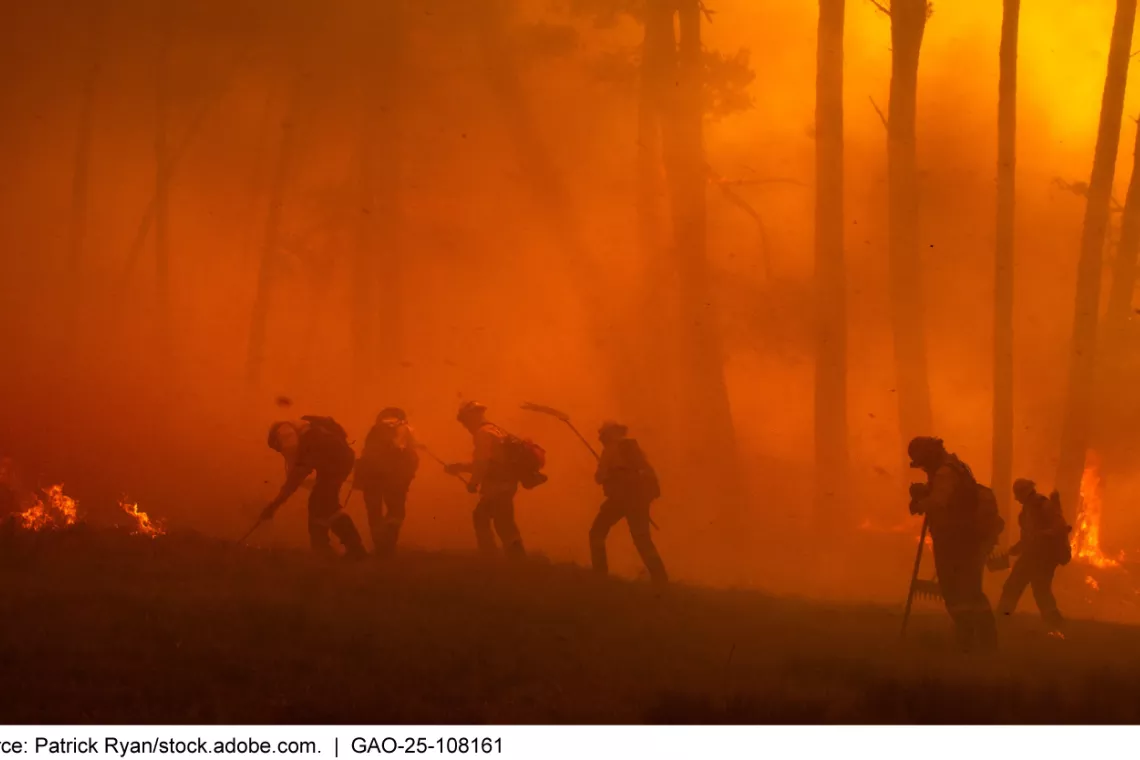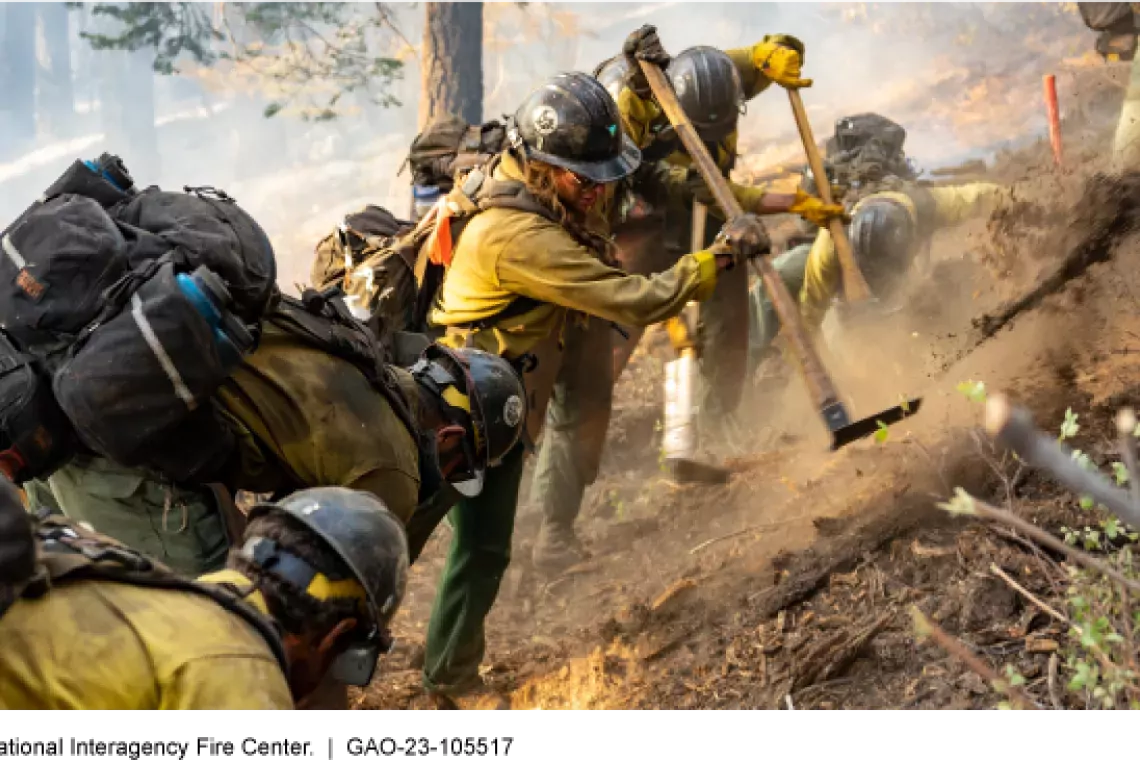Fighting Fire with Fire—The Forest Service Plans to Increase Use of Prescribed Fires
The U.S. is in the midst of an active wildfire season. Wildfires are generally becoming more common and intense. To address this growing threat, the U.S. Forest Service plans to increase its use of “prescribed fires.”
By deliberately burning specific areas, the Forest Service is able to reduce the density of trees, shrubs, needles, and leaves that can fuel wildfires. Prescribed fires have helped reduce the fuel sources that cause wildfires to spread and lessen the risk of larger wildfires and improve forest health. But how does the Forest Service ensure prescribed fires stay under control?
The Forest Service recently took steps to improve the safety of its prescribed fire program. Today’s WatchBlog post looks at our recent report on these efforts and some additional actions needed.
Image

How does the Forest Service use and manage prescribed fires?
The Forest Service plans to increase its use of prescribed fires and has identified 21 areas across the country as priorities. Its goal is to treat up to an additional 20 million acres across the National Forest System over the next 10 years. It also plans to treat up to 30 million acres of other federal, state, tribal, and private lands during that same time.
Image

The Forest Service carefully plans a prescribed fire to minimize the chances it will escape, including assessing forest and weather conditions. These plans are developed by Forest Service firefighters with the required skills and training. They are then reviewed by other firefighters and forest managers. The Forest Service also requires that additional personnel be available to respond if a prescribed fire begins to spread unexpectedly.
The Forest Service conducts about 4,500 prescribed fires each year. Of those, about seven escape their control. While this is less than 1%, the impacts from those escaped fires may be significant. For example, in April 2022, two separate prescribed fires in the Santa Fe National Forest in New Mexico escaped control and merged. This resulted in the largest and most destructive wildfire in the state’s history, known as the Hermit’s Peak/Calf Canyon Fire. The wildfire burned more than 340,000 acres and destroyed at least 160 homes and more than 900 other structures.
What is the Forest Service doing to prevent prescribed fires from becoming wildfires?
In response to the escaped fires in New Mexico, the Forest Service reviewed its prescribed fire program and implemented a number of reforms with the goal of improving safety. For example, the agency directed its staff to review and update the plans it uses to implement prescribed fires to ensure those plans reflect current forest conditions.
However, the Forest Service recognizes that the reforms it envisions will require major changes to agency practices and culture. And when we looked at the Forest Service’s reforms, we found key gaps that could reduce the effectiveness (or safety) of the prescribed fires efforts.
Among other things, we found the Forest Service had not established outcome-oriented performance measures and goals for its reforms. We also found the Forest Service had not planned for how it would manage and monitor its progress in implementing the reforms.
Taking these steps and others we recommended in our report would increase the likelihood that the Forest Service’s efforts to safely expand its use of prescribed fire will succeed. For example, establishing outcome-oriented goals and performance measures would help the Forest Service track and report on progress with meeting its goals for reducing wildfire risk both internally and to the public. And developing a plan that identifies the steps needed to implement the reforms would help the agency monitor its progress toward goals. It would also allow the Forest Service to identify and adjust to issues as they arise.
Check out our full report to learn more about our work on the Forest Service’s efforts to prevent wildfires and our recommendations to improve its prescribed fire program.
- GAO’s fact-based, nonpartisan information helps Congress and federal agencies improve government. The WatchBlog lets us contextualize GAO’s work a little more for the public. Check out more of our posts at GAO.gov/blog.
GAO Contacts
Related Products

GAO's mission is to provide Congress with fact-based, nonpartisan information that can help improve federal government performance and ensure accountability for the benefit of the American people. GAO launched its WatchBlog in January, 2014, as part of its continuing effort to reach its audiences—Congress and the American people—where they are currently looking for information.
The blog format allows GAO to provide a little more context about its work than it can offer on its other social media platforms. Posts will tie GAO work to current events and the news; show how GAO’s work is affecting agencies or legislation; highlight reports, testimonies, and issue areas where GAO does work; and provide information about GAO itself, among other things.
Please send any feedback on GAO's WatchBlog to blog@gao.gov.




